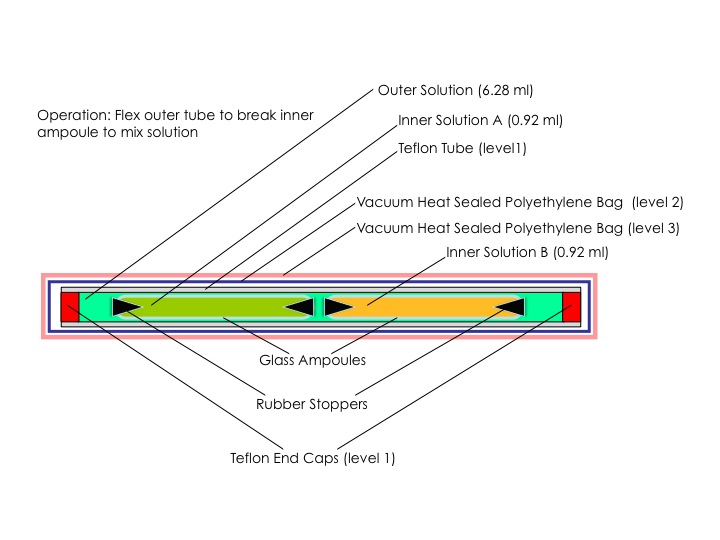The microgravity mini-laboratory that all Mission 2 to ISS student experiment design teams are using is identical to that used for Mission 1 to ISS. Virtually all constraints on the mini-lab’s transportation to the International Space Station, and its operation in orbit, are also identical to those for Mission 1 to ISS. There is one difference, however, in that there will be 8 specific days aboard ISS, spread across the time the Mission 2 payload is aboard ISS, when the astronauts will be available for interaction with the mini-labs.

Figure 1: A Fluids Mixing Enclosure (FME) mini-lab. Shown is a Type 3 FME, containing 3 separate volumes of fluids and/or solids. CLICK FOR ZOOM
Important note: The formal review of the Mission 2 to ISS Mini-laboratory Operation page has just been completed, and as of 10:00 am EDT, March 18, 2012, the page has been updated from draft form. You’ll see that the page also now includes updated graphics for the Type 2 and Type 3 mini-labs, and allows you to download the graphics as pdf files.
Important note: It was pointed out that the
“To Teachers How to Move Forward” page included links to the Mission 1 to ISS Critical TImeline and Mini-lab Operation pages, and not to the Mission 2 to ISS pages. This has been corrected.
Jump to newly updated: Mission 2 to ISS Mini-lab Operation page
Jump to newly updated: To Teachers – How to Move Forward page

Comments are closed.